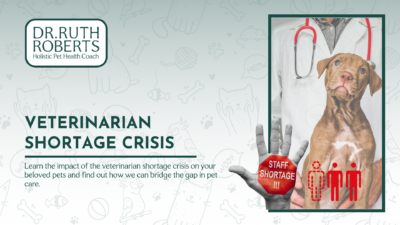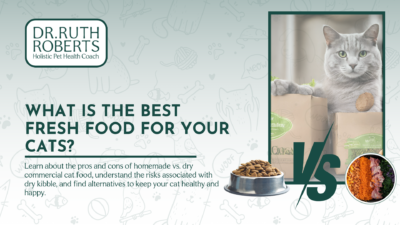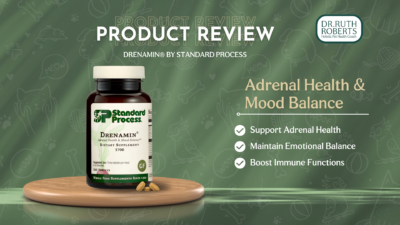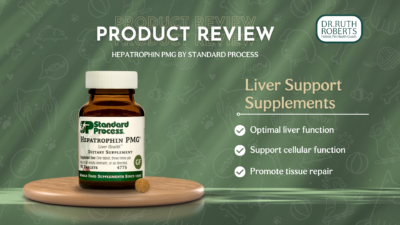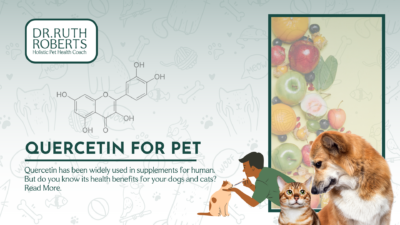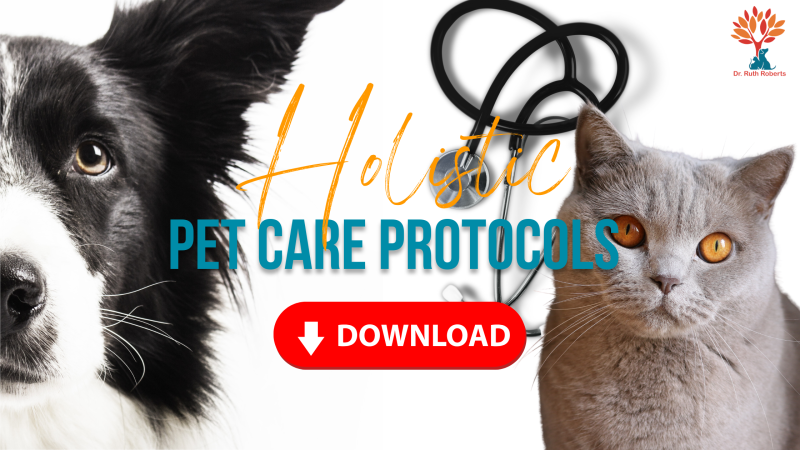"Is Seresto Collar Safe?" Finding the Safe Flea Control
If Seresto collars are the most evil thing since white bread, what can we use?
What does the EPA, Environmental Protection Agency say? And really where this started? There’s a lawsuit about the Seresto collar and some of those articles were here on the Center for Biological Diversity. And personally, and many other veterinarians have said, we’ve never seen a problem with them, but there are some very serious, serious reactions that occur.
So it turns out that it’s something like 1,786 Seresto collars out of something like 25 million doses or colors that have been sold. So the percentages are super small, but it’s horrible if it’s your pet.
So it leads us to the question:
What is the safest flea control product available?
And that is really hard to find out.

What is PFAS and its Availability in Places
So this Center for Biological Diversity is talking about what they think is causing the problem for so many reactions. And it is something called PFAS, which is let’s see, per- and polyfluoroalkyl substances and they are also called forever chemicals because they do not get out of the environment, they don’t get out of our water system. And so the bigger problem than the flea collar is this stuff is in so many products.
Because it is not regulated by anyone, although the EPA is sort of starting to take responsibility for it, it has literally been sprayed over almost every state in the United States, in various forms and another, so one is in mosquito control. The chemical one is called Anvil, they’re horrible countables and they do not go away.
We’re faced with things like now it’s in our seawater and the ceasefire is literally throwing aerosolizing these PFAS chemicals. We worry about things like glyphosate, DDT, I mean, American children are born with DDT and their cord blood and this chemical was banned in 1968 in the United States. Now it is still used in Mexico, and a lot of our produce goes north from Mexico into the US but the issue is that it is in the water cycle.
Water evaporates, it goes up into the air. It comes back down as rain and it fills up your local pond. But the problem is, this cycle of water has all of this garbage in it and nobody’s really sure how to get rid of it.
In Massachusetts, they were horrified to find that this apparently innocuous chemical was, they were basically spraying their people with it. And so they’re trying to figure out how to clean up their water. Florida is so mostly an agricultural state.
Florida, California, much of the south bay include PFAS in so many of their products because nobody was tracking it. And the reason they do this is that it amplifies the ability of whatever chemical you’re using to do its job. So it sounds great from the outside, but it’s pretty, pretty awful.

What is EPA
To make things more difficult, the EPA has these things called data evaluation records, which are supposed to cover all of the fleas chemicals. So to make a little further clarification, if your veterinarian has to write a prescription for something like heartworm prevention and any of the heartworm combo products that are restricted, is not the right word. It is governed by the FDA, the Food and Drug Administration, if it is a non-prescription item, it is governed by the EPA.
The sender administrations have weakened the EPA based on what industry wants so that they just don’t have to follow the rules. The EPA was warned by Canada’s Health Best Pest Management Agency that they would not approve Seresto collars because of the reaction rates that they were seeing, but it’s just ugly.
How to Use the EPA Record Tracker
So anyway, the EPA has these things called data evaluation records because they get called to the floor on the spot-on products. So things like Frontline Advantage, Revolution, which also includes a heartworm prevention for cats. So that again, that’s FDA, but, so they went through and we’re like, okay, what is going on, and they looked at each product.
When you go over here to search the EPA records, they’re retiring all of this information. So if you put it in the search bar, Frontline, you get some data. So I was getting a lot of 404 not found before this. Many of them have 404 pages, meaning the information just isn’t there. So you can get some information and then you have to go through and read each of it to figure out what the actual reaction rate is.
Basically they found that small breeds were more effective than larger breeds so as a result of that, they were supposed to create product sizes that were for 10 pounds and under when they didn’t exist. So I think that the majority of the spot on stuff is like 25 pounds, 50 pounds, and then a hundred pound weight break. If you’ve got a six pound dog and you’re giving it a 25 pound dose, that’s a problem.
They found cats, well, and they also found dogs that owners were trying to split tubes up. Like if they had five Chihuahuas, they get a dose for a 50 pound dog. And if they were ballparking it, that’s where toxicity problems would occur. With cats, their problem was more that they were getting exposed to dog products.
For instance, some of the dog products like Advantix contains a Permethrin that will really wreak havoc for a cat. You know, even though you may have applied it properly to each pet until that stuff dries, it has potential toxicity from your golden retriever to your cat. If they change, if they hang out and they, and so they’re like, some of this is happening because pet owners are not being cautious and some of it, because they’re not reading the label properly.
And even the little pictures of the cat with the red circle, with the bar through it, they said, okay, you have to make that bigger for people to see, because evidently we can’t process what a label says on our own anymore. But then they said, okay, now we actually have to determine the safety of these products who don’t accurately predict the toxicity seen in the incidents that took place.
And so they promised to do all this stuff. Some of it, they got done. Some of it, it didn’t, uh, but evidently there is enough industry money that really prevented any of these products from being recalled.
So here’s the news release about it in 2010, they’re going to do all this stuff and then really there’s nothing else that happened.
How to Report an Incident
So, this page I wanted to put in, if you have a problem with one of these products for your pets, this is where you would report it. And the other issue is, because many of these are EPA products, the manufacturer doesn’t really have to respond to them, which is super frustrating. And then, we know that our pets are pooping out these perfluoroalkyl and polyfluoroalkyl alcohol substances. And you know, some of it is coming from putting it on pets and some of it’s coming from the environment.
What this article is saying is that, you know, we can use pets as a Sentinel for what we humans may have been exposed to.
Now what do we do about it?
This is part of where this report came out in March of 21, saying that, there’s been a lot of deaths due to the Seresto collars.
There is a lawsuit where I think Biological Diversity actually filed a lawsuit against the EPA to get them to recall these collars. But I think it’s, not just those collars, it’s all of these products.
What Flea Products Should We Watch Out For?
Isoxazoline is what’s in perfecto and the oral flea stuff. And also some Paragon which can be applied topically for cats. Uh, and then Revolution has Sarolaner as well, which is another one of these products.
This has been black box by the FDA because of neurologic events, meaning seizures, tremors, things of that nature, even when given at normal doses and do y’all know what I mean when I say the FDA has black box to products?
This happens a lot on human medications, but literally there is a black box on the label that is like in your face. And if you miss it, it’s your own damn fault. But basically it says this product has, or this drug has caused significant and serious side effects.
And so you have to discuss with your doctor if the risks outweigh the benefits. And so meanwhile, back at the ranch, these are now the biggest selling products in the United States for flea control. So it, and it’s frustrating because the way these things have to work when they’re given orally is it has to, for Nexgard that works for 30 days, for Bravecto it works for 3 months to 90 days. Your pet has to eat it, it goes into your pet’s bloodstream.
There has to be some level of fat storage for this to be released continuously.
The fleas have to bite your pet in order to die. Now, I think there is also transmission to the skin level because the whole, there, these things are promoted to help protect against flea allergies because you know, what has to happen is that it has to prevent the flea from actually biting because when the flea bites the flea’s alive, that is what creates the allergy.
It has to be on the skin surface as well. So that’s super frustrating. That means that all these families that started using this oral stuff, because they didn’t want to put the topical stuff and expose their kids to it. They’re still exposing their kids to these medications.
One is Lufenuron which is per gram. The sucky thing is that in the United States, it is only available in combination with milbemycin and praziquantel. So milbemycin is for heartworm prevention. That’s in ivermectin and, I think Advantage Multi, I have seen dogs develop autoimmune disease taking these products in specific.
So autoimmune hemolytic anemia, autoimmune thrombocytopenia, and so that’s horrible. I think that you can get a plain per gram compounded. I have no idea how good or bad this company is. I’ll get my assistance to contact reputable compounding pharmacies like Roadrunner, and things like that to see if they can compound it or not.
For cats, I think the injectable program is still available. Although the problem there is, it’s been associated with a vaccine associated with fiber sarcomas, or actually, more appropriately, it should now be called injection site by rare sarcomas.
- Capstar
How to get rid of adult Fleas?
A good product getting rid of adult fleas is Capstar.
So it will kill every last week on the animal. There is very, very, very low toxicity. So we could use this safely for puppies and kittens. And it says, even though this dose range is high, 2 to 25 pounds for kittens that would come in just covered with fleas, we can, you know, we could break a tablet up and give it to a litter of kittens.
They would be clear of fleas and otherwise it may have taken us forever to get the fleas cleaned off of them.
So I have had clients that managed fleas in South Carolina using Capstar only, I have also seen those same clients create some problems in their pets as far as toxicity, because they were giving it, you know, like a 10 pound dog, the up to 25 pound size every day.
And the way this works is it is a nicotinic receptor agonist. And so what this client did was create the shakes in her pet because some other neuro-transmitters were enabled to adhere to it.
So, you know, we’re back to when I first started in veterinary school, and this is on Petco by the way. And I think this is available in almost every pet store and it finally went over the counter probably a decade ago. But the frustrating thing is, if you live in the Southeast where fleas are a super huge problem, what do you do?
I’ve told this story when I first started practice in 1990, flea control was me handing literally a grocery bag full of pesticides to my client. And it shampoos, dips, sprays for the pet and then sprays for the house, sprays for the yard, and the volume of chemicals we were putting out just to get these guys under control was horrifying.
We are now drinking that, um, it just, it is in the water. Some of these were more of a hindrance and so they do break down, but they’re, you know, a lot of them, as we got things that killed better, they don’t break down as well.
Can we kill Flea Eggs?
What do we do when per gram came out? Um, it was a miracle. I mean, it really was a miracle because it finally helped us break the flea life cycle. And I think that’s part of where everybody has to kind of head back is interrupting that flea life cycle.
So if you think about it, you know, there’s a pyramid shape that’s commonly depicted.
The adult fleas are at the top one to 5%. The next 10% is the pupae, which are impenetrable. There’s nothing that kills them. You have to wait for them to catch out. And then the bottom 85% of the pyramid are fleas, eggs, and larvae.
What can we use at home to Get rid of fleas?
If we do things like use flea busters products to treat the house, in the vacuum cleaner, under the sofa cushions and nematodes to treat the yard, the shady parts of the yard, then we’re working on that 85% of the problem.
If we can find compounded Lufenuron, I think that’s also not a bad idea and then use Capstar for cleanup along with bug zone tags, essential oils, amber colors, or another one that the people have been talking about quite a bit, I think that will help.
But the issue is, especially if you live in the Southeast, once we kind of blow up in your house, it is really a bear to get things back under control.


